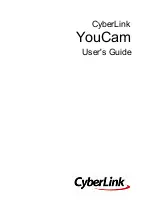
Section 4.7:Manual Package Installation
47
XCLPA/9P/vtImA8CZN3jxGgtK5GGtDNJ/cMhhuv5tnfwFg4b/VGo2Jr8mhLUqoIb
E6zeGAmZbUpdckDco8D5f++pCEpJLJkkzel/32N2w4qzPrcRMCiBURES
PjCLd4Y5rPoU8E4kOHc/4BuHN903tiCsCPloCrWsQZ7UdxfQ5LQiUmVkIEhhdCwg
SW5jIDxzZWN1cml0eUByZWRoYXQuY29tPohVBBMRAgAVBQI36lQ4AwsKAwMVAwID
FgIBAheAAAoJECGRgM3bQqYOsBQAnRVtg7B25Hm11PHcpa8FpeddKiq2AJ9aO8sB
XmLDmPOEFI75mpTrKYHF6rkCDQQ36lRyEAgA3bZsk8jRA8ORIX8DH05U
lMH27qFYzLbT6npXwXYIOtVn0K2/iMDj+oEB1Aa2au4OnddYaLXyS0t+
5ab2ZfIQzdh7wC/HhvtTdylfqIX0WEfoOXMtWEGSVwyUsnM3
Jy3LOi48rQQSCKtCAUdV20FoIGWhwnb/gHU1BnmES6UdQujFBE6EANqPhp0coYoI
hHJ2oIO8ujQItvvNaU88j/s/izQv5e7MXOgVSjKe/WX3s2JtB/tW7utp
JsFdbLV/t8CozUTpJgx5mVA3On+1iVfT7Ov/0kcAzwADBQf9
E4SKCWRand8K0XloMYgmipxMhJNnWDMLkokvbMNTUoNpSfRoQJ9EheXDxwMpTPwK
ti/PYrrL2J11P2ed0x7zm8v3gLrY0c8glY+p31ZPOr5ogaJw7ZARgoS8
Bwj8Dete0TELKOL2/itDOPGHW07SsVWOR6cmX4VlRRcWB5KejaNvdrE5
4XFtOd04NMgWI63uqkwEZtmbz3tY7YVP6IUf/w6YPQFQriWY
FiABlIUqIw80VgjsBKmCwvKkn4jg8kibXgj4/TzQSx77uYokw1EqQ2wk
OZoaEtcubsNMquuLCMWijYhGBBgRAgAGBQI36lRyAAoJECGRgM3bQqYOhyYAnj7h
VDY/FJAGqmtZpwVp9IlitW5tAJ4xQApr/jNF4O1765F7tA==
=3AHZ
-----END PGP PUBLIC KEY BLOCK-----
2.
At the shell prompt, import the key with the following command:
gpg --import redhat2.asc
The resulting message tells you that the key was processed. To check that the key was added, type
gpg --list-keys
. You will see the key you just downloaded from Red Hat, as well as your
own keys.
4.7 Manual Package Installation
If you chose to download the software updates with the
Red Hat Update Agent
, over the Web through
Software Manager, or have RPM Updates delivered to your system automatically (but not have them
automatically installed), you must install them manually using the
rpm
utility.
To install them, change to the directory that contains the downloaded packages. The default directory
is
/var/spool/up2date
. Then, type the command
rpm -Uvh *.rpm
. When the packages are
finished installing, you can delete them if you wish. You do not need them anymore.
After installing the packages, you must update your System Profile so that you are not prompted to
download them again. Refer to Section 4.8, Syncronizing Your System Profile for details.
Содержание JBoss Developer Studio 3.0
Страница 1: ...Red Hat Network User Reference Guide 3 0...
Страница 9: ...Section 0 2 More to Come ix rhn feedback redhat com...
Страница 10: ...x Introduction...
Страница 28: ...28 Chapter 2 Red Hat Network Registration Client...
Страница 66: ...66 Chapter 6 Red Hat Network Daemon...
Страница 68: ...68 Chapter 7 Using Red Hat Network with Red Hat Linux 6 2...
Страница 72: ...72 Chapter 8 Frequently Asked Questions...
















































